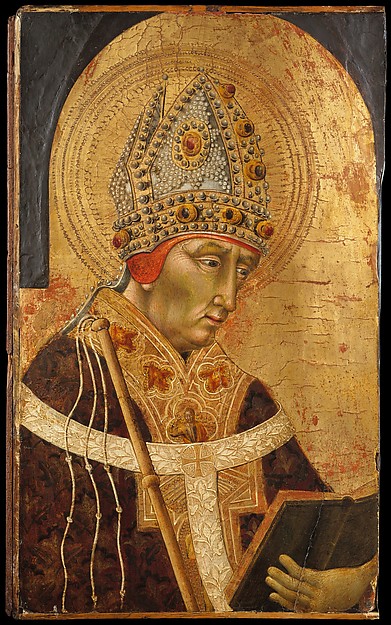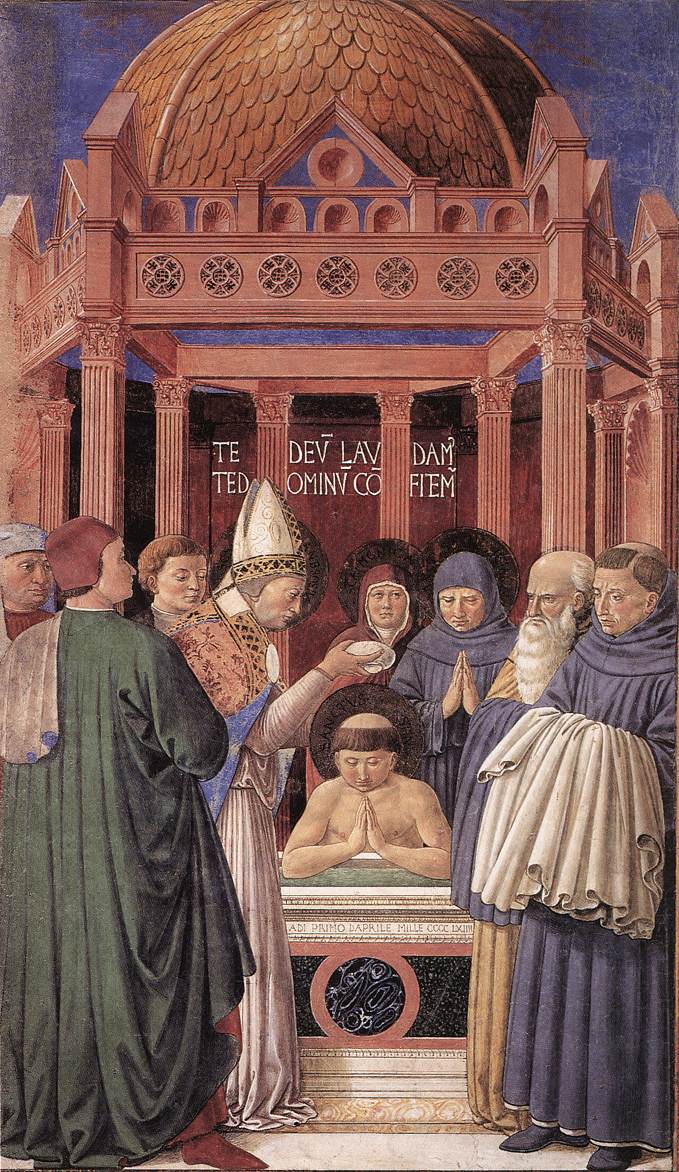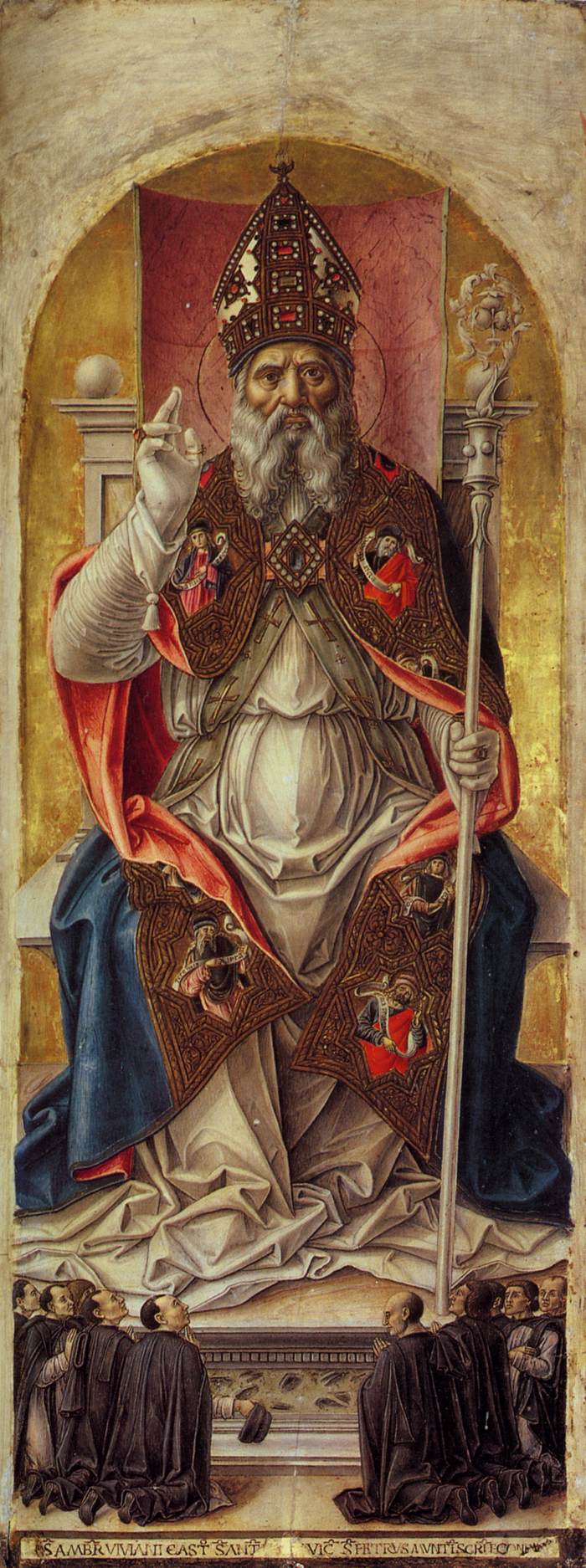Today, 7 December, Milan celebrates the feast of its patron saint, St. Ambrose. Aurelius Ambrosius (340 – 397 CE) was born to the Roman nobility, probably in Trier, Gaul. He studied as a lawyer and later became governor of Milan. Shortly after, Ambrose was made new bishop of the city by popular acclamation, though he was still an unbaptized catechumen. He refused the office at first, but Ambrose was eventually baptized, ordained as a priest, and, on 7 December 374, consecrated as bishop.
St. Ambrose was a staunch opponent of paganism and heresy. His preaching brought Emperor Theodosius to do public penance for the massacre of innocent civilians perpetrated at Thessalonica in 390. His power as an orator is also attested by the conversion of the skilled rhetorician Augustine of Hippo. The two of them, together with St. Jerome and St. Gregory the Great, make up the four original Doctors of the Latin Church. Ambrose also had a significant impact on sacred music, through the composition of liturgical hymns.
In works of art, St. ambrose is often represented with a riding whip.
Mosaic of St. Ambrose, Basilica of Sant’Ambrogio, Milan. The church was built starting in 379 by the Saint.
Giovanni Di Paolo, Saint ambrose, The Metropolitan Museum of Art, 1465–70.
Benozzo Gozzoli, Ambrose Baptizing Augustine, 1465, Church of Sant’Agostino, San Gimignano.
Bartolomeo Vivarini, St. ambrose Polyptych (central panel), 1477, Accademia of Venice.
Alvise Vivarini, Altarpiece of St Ambrose, 1503, Santa Maria Gloriosa dei Frari, Venice.
Camillo Procaccini, St ambrose Stopping Theodosius, early 17th century, Basilica di Sant’Ambrogio, Milan.






